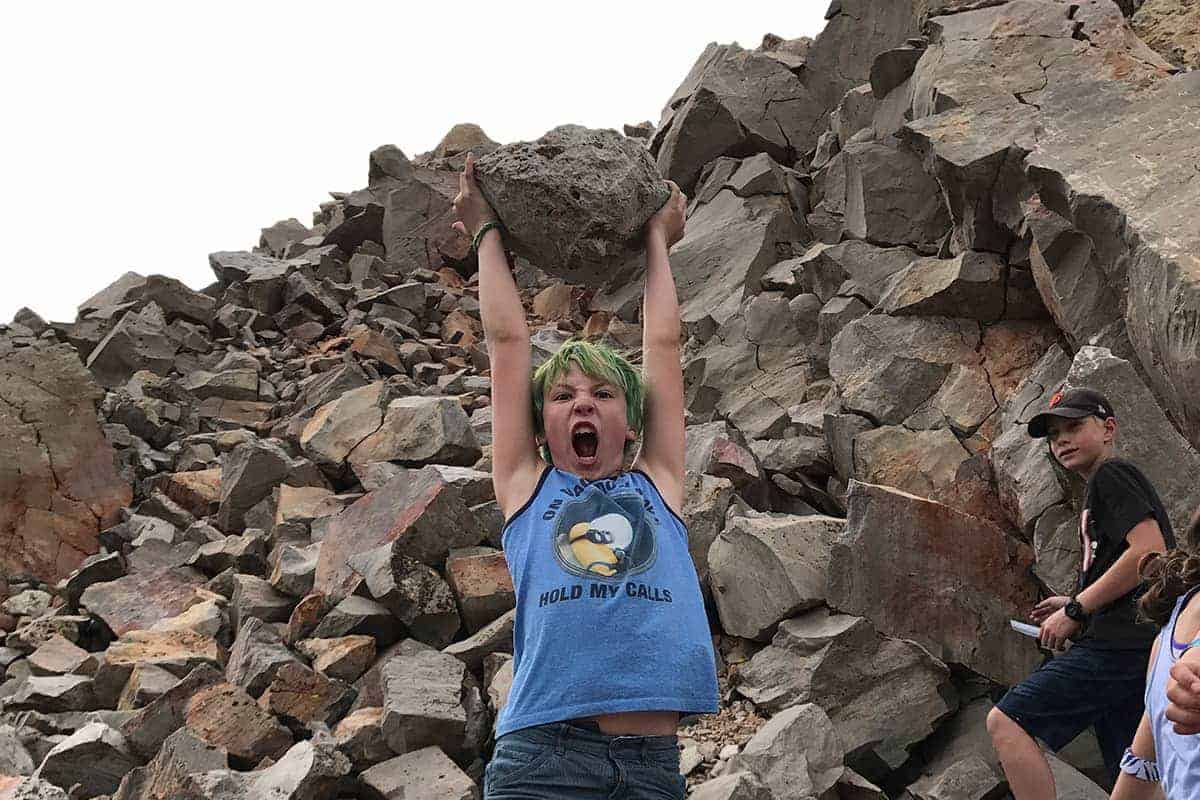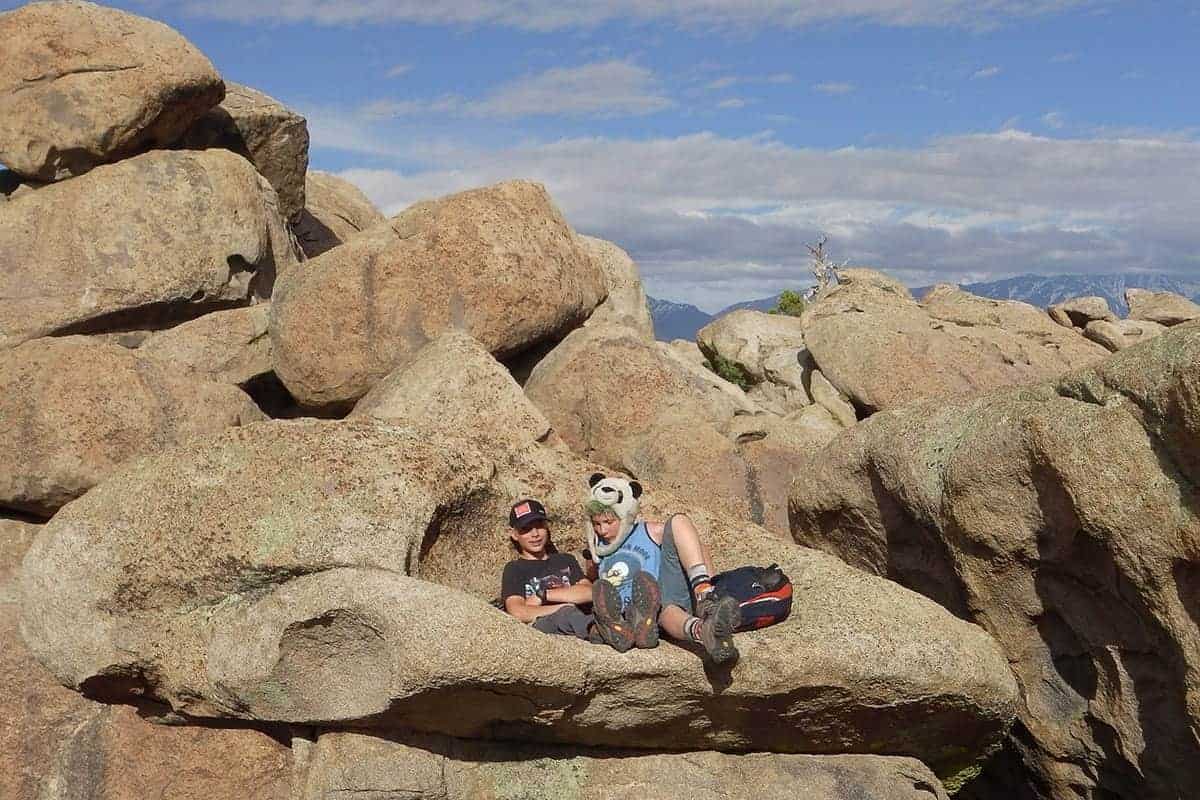Sixth Graders Embark on a Mock Mission to Mars
Have you ever had a dream about being on a mission to Mars? The 6th-grade crew at Tahoe Expedition Academy lived out that dream during their “Space Expedition” learning expedition.
Their semester-long project related our innate human need to explore to our fascination with the atmosphere around us. To train for their mission, they had to first build background knowledge in class and apply it to interactions with real-world experts. Just as NASA trains and experiments with year-long simulations in isolated locations on Earth, the 6th-grade crew sought out areas with unique otherworldly landscapes for a mission simulation. The Mono Lake Craters in the eastern Sierra Nevada provided just that. Before they knew it, their space shuttle had taken off and was landing on Mars.
Their mission began months prior, as the students looked to tie in the passage of time to the moon, planets, and constellations while relating objects in the night sky to ancient Greek and Roman mythology. They studied the formation of our solar system and conducted research reports on our planets and moons. Next, the students created a model scaled solar system and mapped out the planetary orbits. They continued building background knowledge by experimenting with gravity and its effects on Earth, including explaining orbits, tides, and weight. Next, they explored human’s early space exploration and its ties to the space race. Finally, the students explored what a trip to Mars might look like. They learned about the hardships of space travel, including radiation, health, recycling and filtering water, and growing food in space. They researched and designed models that meet requirements to reduce speed and impact through the minimal Martian atmosphere, and what a settlement on Mars would require.
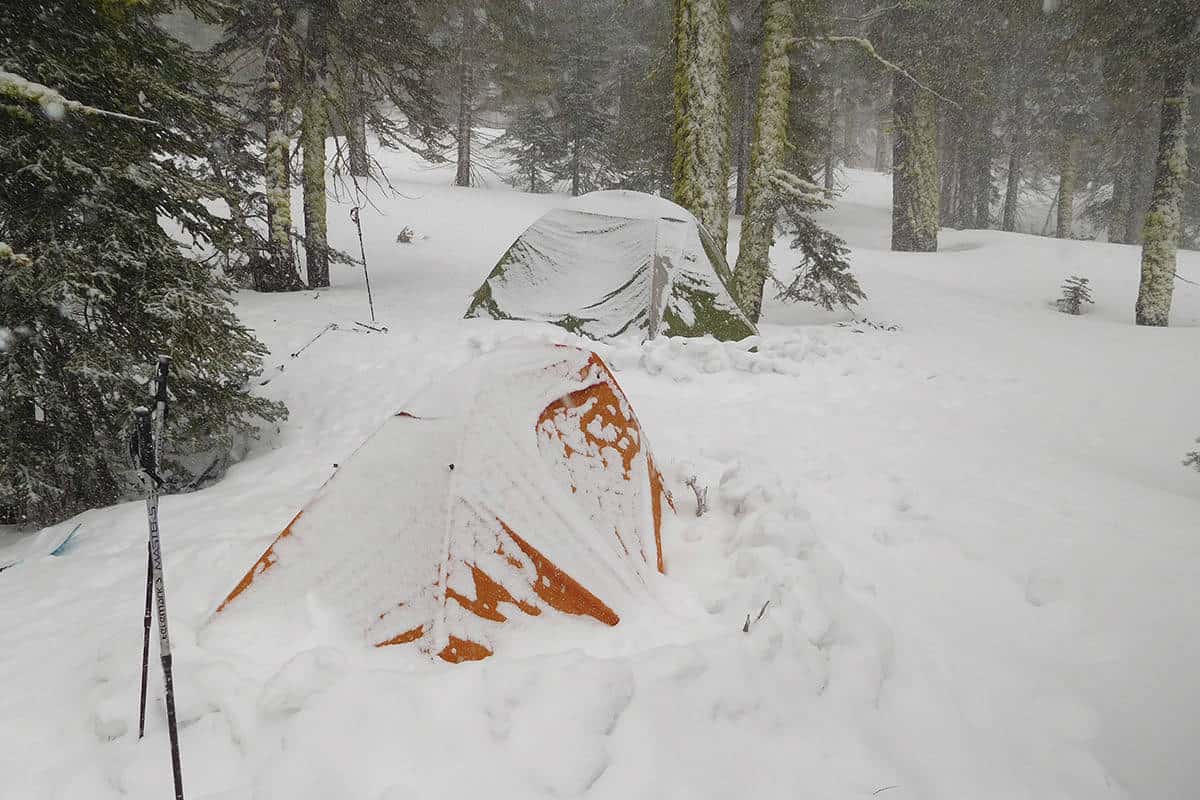
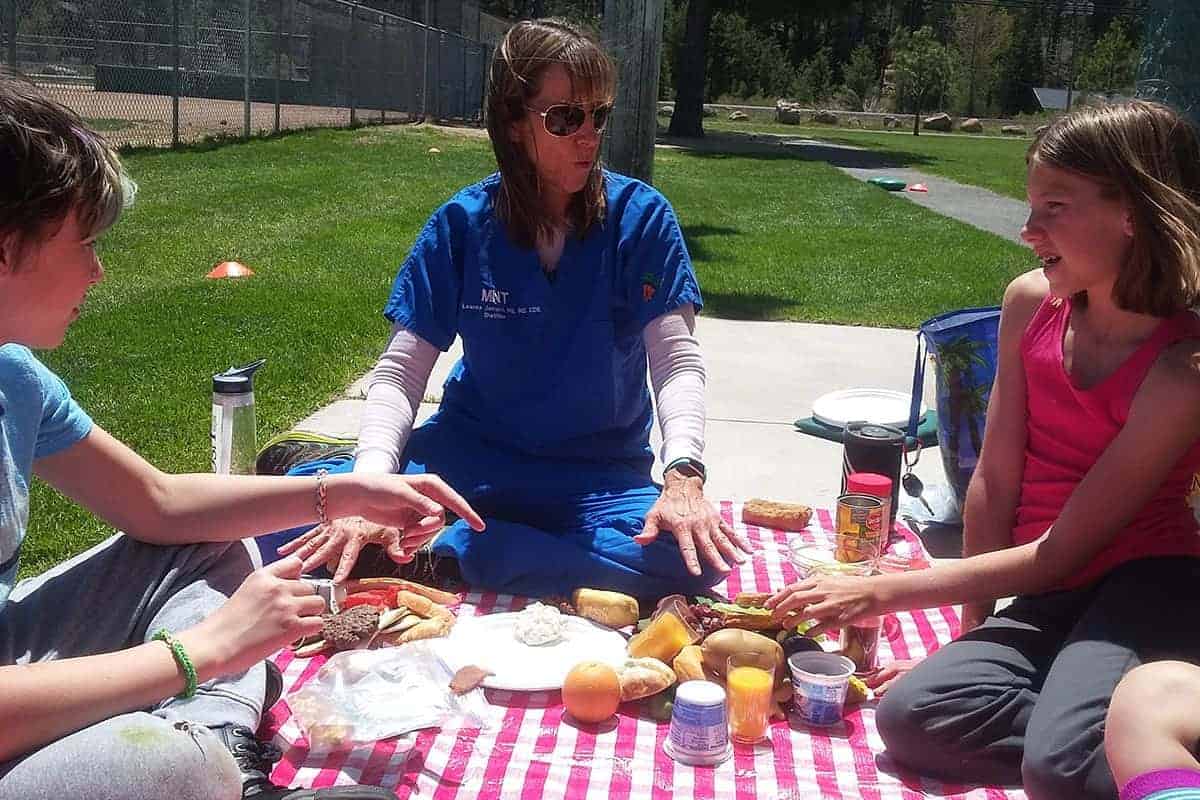
If you can camp in the snow, you’re on your way to surviving on Mars. Right?
To apply their learning in real-world situations, the students first visited the Fleischmann Planetarium on the UNR campus to look at the formation of the solar system. Next, they headed to Fly High Trampoline Park to work on the body awareness and strength training an astronaut needs. To understand Newton’s laws of motion, students headed to the slopes of Sugar Bowl where they analyzed the ski-snow interaction with regard to uneven forces, leading to a change in velocity. To understand the challenges of space travel, students met with a flight controller from the Johnson Space Center and a physical trainer who ran them through an astronaut training regimen that focused on core, lower body, and cardiovascular strength as well as balance and coordination. Finally, they met with a nutritionist who guided them through a food sort and discussed sources of vitamin D, K, and antioxidants.
To build character and their crew, the students ventured on an overnight snow camping and stargazing trip to Paige Meadows. They persevered through several types of precipitation, cold temperatures, and high winds. While in the open space, the students learned to identify some major constellations and gained an understanding of the vastness of space in our solar system. Through it all there were great acts of kindness like lending a warm pair of dry gloves, feats of strength like towing a loaded sled, and collaboration such as building their camp kitchen and dining area.
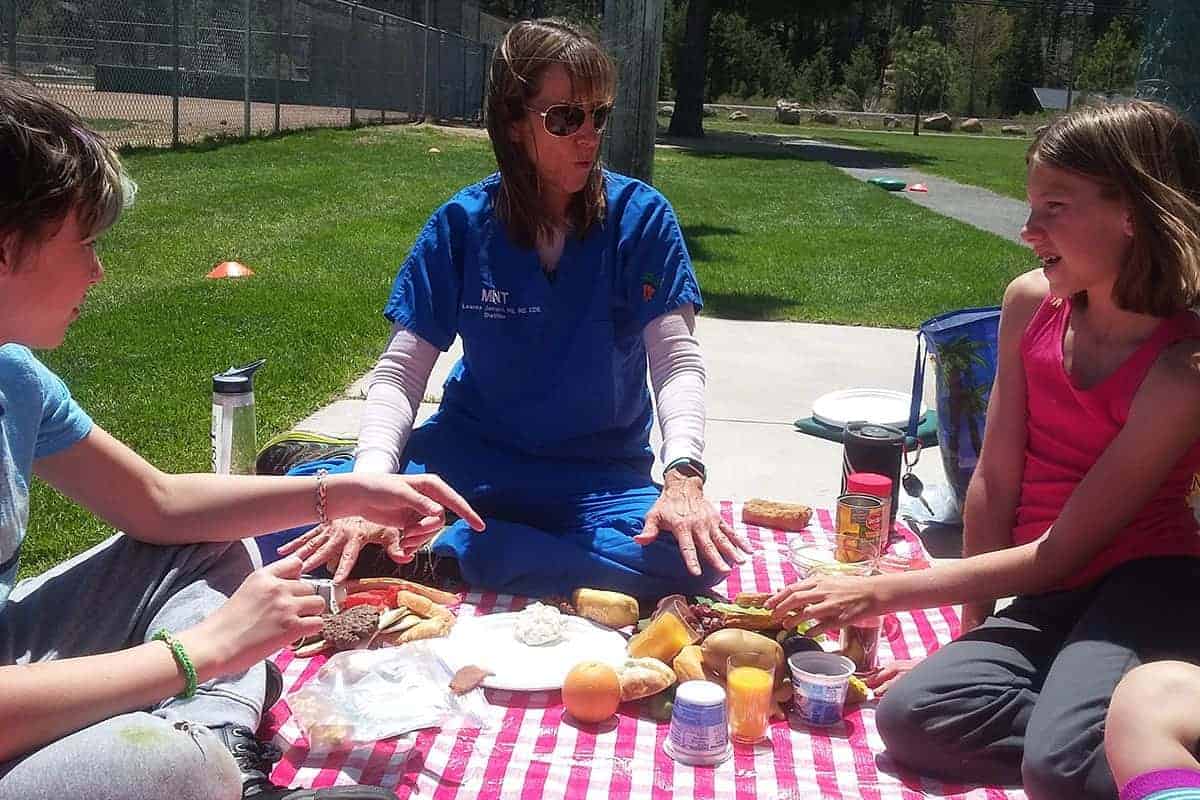
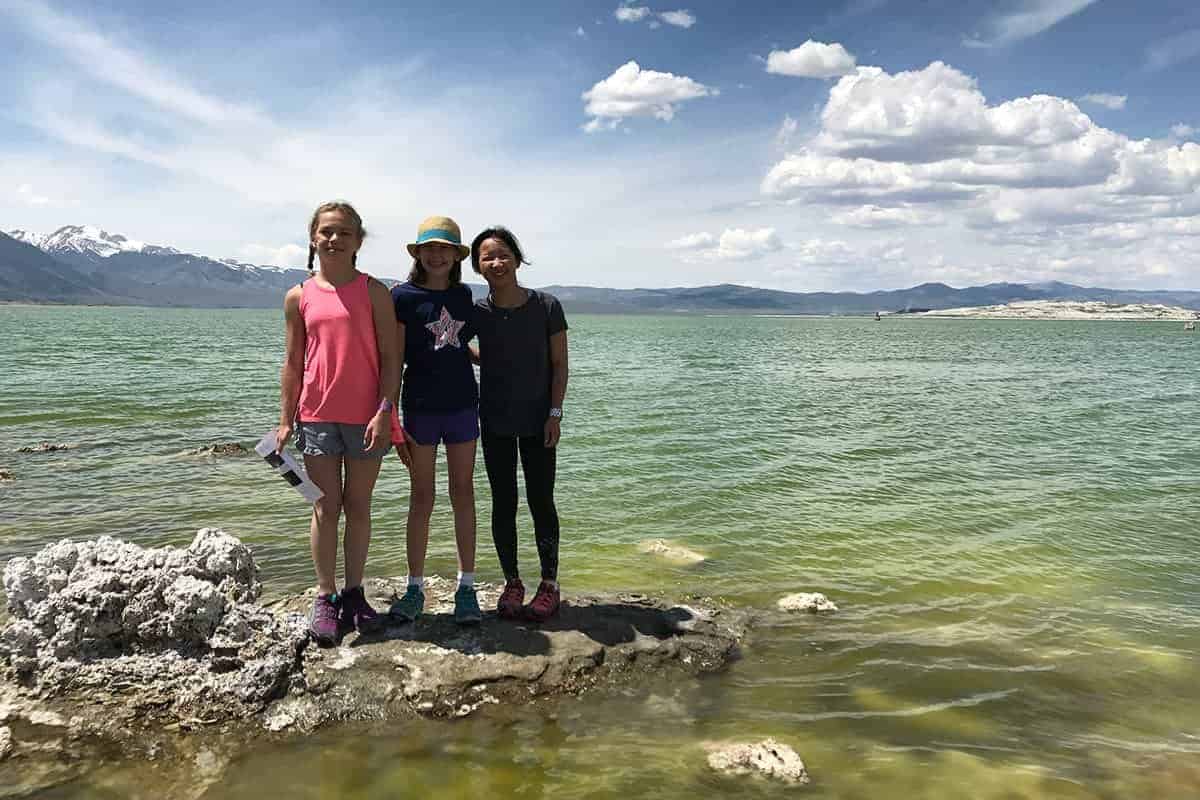
Students met with a nutritionist who guided them through a food sort and discussed sources of vitamin D, K, and antioxidants.
To build character and their crew, the students ventured on an overnight snow camping and stargazing trip to Paige Meadows. They persevered through several types of precipitation, cold temperatures, and high winds. While in the open space, the students learned to identify some major constellations and gained an understanding of the vastness of space in our solar system. Through it all there were great acts of kindness like lending a warm pair of dry gloves, feats of strength like towing a loaded sled, and collaboration such as building their camp kitchen and dining area.
As a service component to their learning expedition, the students shared their knowledge of the solar system with 1st-grade science students at Kings Beach Elementary. Their research reports allowed them to add a touch of sci-fi to their stories and provided them with interesting facts to share. They created interactive stations including moon phases, the topography of Mars, the planets and their associated Roman Gods, the composition of the outer planets, and a tour through a scaled down version of the inner planets.
But back to the Mission to Mars and their space shuttle’s landing at Mono Lake. Once the crew arrived on “Mars,” they hiked among the tufa and learned about its formations. From there they hiked along Panam Crater and climbed to the top of its plug. They explored the site and lifted and played catch with moon rocks in the “low gravity” environment (thanks to pumice). Next, they set up their “HAB” at Benton Crags and prepared a dinner of various freeze-dried dishes. They sampled and rated the food packets, just as astronauts sample and design their preferred space menus. After getting fueled up, they did one short recon mission, then mapped the general area from memory. The crew set up top ropes, and students had the opportunity to scale big rock faces, while others constructed landers for food drops and navigated a rover through the sandy terrain. They capped off their “Space Expedition” learning expedition with fireside readings about an actual mission to Mars while looking at the stars. Mission complete.
